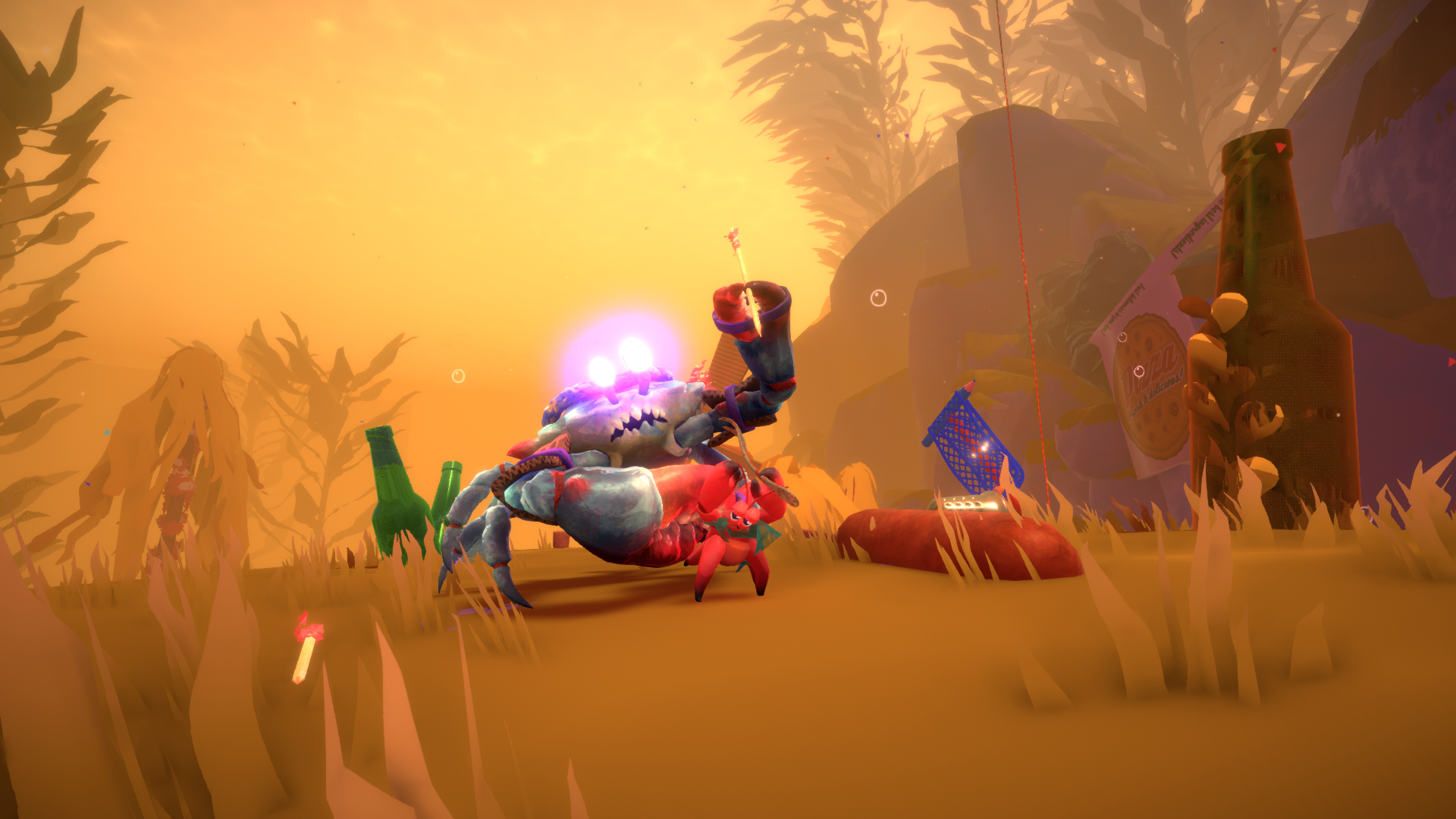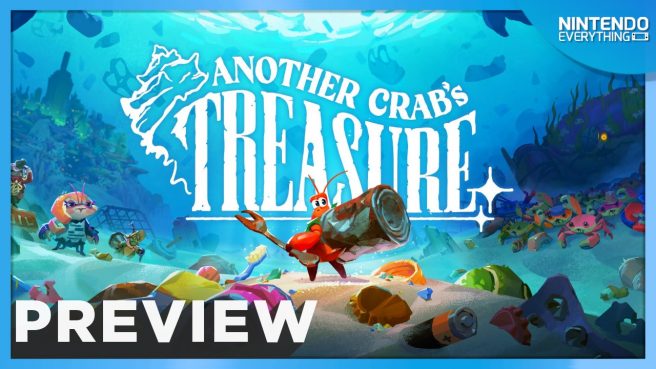[Preview] Hands-on with Another Crab’s Treasure, an underwater Soulslike
Over the years, I’ve made a few attempts at the Soulslike genre – most notably via Bloodborne and the recent Demon’s Souls remake – but have yet to find one that I truly want to sink a lot of time into. I think it’s just a matter of preference, as I don’t have much patience for games that don’t respect the player’s time or are needlessly opaque and difficult – but at the same time, I love games with moderately challenging, strategic real-time combat. It’s why I was so curious to try out Another Crab’s Treasure at Summer Game Fest; finally, here’s a Soulslike game that seems purpose-built for relative genre newcomers like me. After going hands-on with the game, I think this could be the first Dark Souls-inspired game I actually complete.
Another Crab’s Treasure is set in what the game’s lead developer described to me as a “crumbling underwater kingdom.” You play as a nimble, light-footed crustacean who has drawn the ire of the Duchess due to, of all things, neglecting to play your property taxes on your shell. As such, it’s been taken away from you, and to make matters worse, the royalty have sent their legion of intimidating royal soldiers after you. This is your impetus for jumping and fighting your way through the various stages of the oceanic world, improving your combat abilities as you fight various bosses along the way.

Most of the mechanics in combat will likely feel familiar to genre veterans – of course, you have a signature dodge-roll ability to get you out of the attack range for your foes, and combat is tied to your attack animations, so players are expected to be deliberate in their actions. Audio cues and on-screen warnings indicate when a foe is about to unleash an unblockable attack, and if you die, you’re sent back to the last checkpoint, and all the foes you just defeated will respawn on your path back to the boss.
The big shakeup is that instead of wielding a shield, you wield shells – breakable but versatile enclosures that can protect you from most types of damage. Shells are designed to be disposable and have different attributes – you’ll likely go through several over the course of tougher battles if you’re anything like me. It’s a smart progression system, as good shells might be tucked away in hard-to-reach parts of the world, encouraging deeper exploration. Some shells might do things like increase the effectiveness of your dodge ability, for example, but at the cost of defense, or vice versa. So, players will have some room to experiment with different builds depending on how they want to engage in combat.

Players can also upgrade their crab by collecting, funnily enough, microplastics – the in-game currency. (There are certainly some themes of environmentalism present in the game – some of the shells, too, will literally be pieces of garbage.) These can be used to level up your base stats, but also to trade with NPCs for useful items. The in-game equivalent of a magic system – called “umami” in Another Crab’s Treasure – also opens up different ranged attacks in combat, such as grenade-like throwables that can deal significant damage. These abilities are recharged by landing hits in combat, so there’s still a need to get in close during battle if you hope to use your full toolset. Some enemies won’t be interrupted by your basic attacks at all, I was told, so mastering these additional skillsets seems potentially crucial to success.
The game is also a bit of a platformer, too. As you make your way to the next boss battle, not only will you be jumping around and riding moving platforms but using a grapple hook to zip between far-off landings. The physics of the platforming feel floaty, as you would expect from an underwater environment, and I found that my jumps needed to be very precise to avoid falling to my doom in the cavernous depths below. You’ll encounter smaller foes around the world as you explore, but you don’t necessarily need to fight all of them if you don’t want to – in fact, if you have a shell equipped you really want to save for an upcoming boss, it may actually be wise to avoid some battles here and there (especially if you’re a wimp like me).

The game utilizes a relatively standard control scheme for the genre, with combat being mapped to bumpers by default, but the developers at Aggro Crab are including a wide range of control and accessibility options for players who have different preferences or just want a less frustrating experience. If you just want to blaze through an encounter, you can turn on what was jokingly described to me as “story mode,” which – I kid you not — replaces your shell with an oversized automatic pistol that can mow down any foe in a few shots. That said, I really feel like the developers have made the combat quite accessible out of the gate, and I was able to hold my own even in a later-game boss while I was still learning the game’s flow. While I certainly had my share of untimely deaths, they always felt fair, and I felt a strong pull to try again until I had mastered it, rather than feeling discouraged – a testament to the level of balance the developers have worked towards building.
I had a great time with Another Crab’s Treasure, significantly more than I had expected. The game’s colorful undersea world is a joy to traverse, combat strikes a rewarding balance between depth and accessibility, and the overall presentation is top-notch. This could be an ideal entry point for players who struggle to get into souls-like games, especially if the game can maintain a satisfying difficulty progression. We’ll find out for sure when Another Crab’s Treasure launches on Switch in early 2024.
